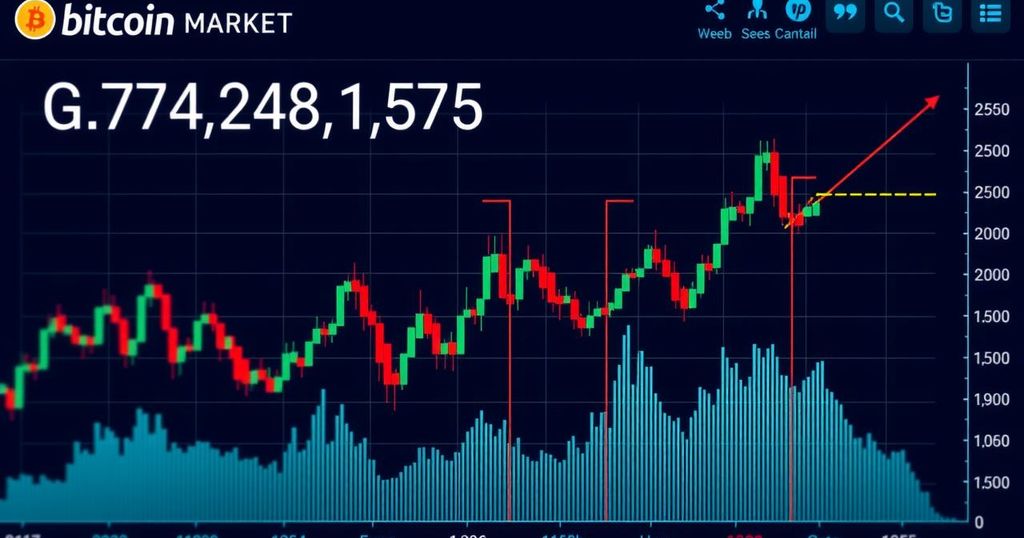Bitcoin Valuation: Balancing Transactional Demand with Speculative Dynamics
This article explores the valuation dynamics of Bitcoin, contrasting transactional demand with speculative behaviors. It presents a foundational model that elucidates the interplay between these dynamics, revealing how fluctuations in investor sentiment can create conditions reminiscent of speculative bubbles, necessitating continuous capital inflows to maintain inflated prices.
The valuation of Bitcoin remains a contentious topic, with conflicting opinions among financial experts and analysts. Critics frequently dismiss Bitcoin as a mere speculative bubble or a fraudulent Ponzi scheme, while proponents regard it as a legitimate new asset class akin to digital gold. This dichotomy is intensified by Bitcoin’s recent price surge, which has reignited discussions surrounding its intrinsic value versus speculative allure.
Traditional asset pricing methodologies, which rely on the calculation of discounted cash flows, prove inadequate for cryptocurrencies like Bitcoin, which do not yield dividends. Furthermore, Bitcoin’s role as a medium of exchange complicates its valuation, as fluctuating exchange rates necessitate a complex pricing calculus distinct from established financial securities. This article introduces a foundational model that bridges these differences, examining both transactional demand and speculative beliefs that underpin current Bitcoin evaluations.
The foundational model posits a baseline equilibrium price that anticipates a minimum price for Bitcoin based on current and expected future transactional demand. This model elucidates that a zero price for Bitcoin is implausible, as it would imply a complete lack of anticipated transactional demand. Thus, assessments of Bitcoin’s value should take into account potential transactional interactions that might justify current valuations alongside investor expectations.
Critically, the contrast between the baseline and bubble equilibria is salient. In a baseline equilibrium, the share of Bitcoin held by investors diminishes over time as they sell to users. In contrast, under bubble conditions, the share of coins increasingly shifts from users to investors due to rising exchange rates, necessitating continuous capital inflows from new investors to sustain inflated prices. This distinction underscores the need for thorough analysis in assessing Bitcoin’s future trajectory.
The article further explores the notion of Ponzi schemes in the context of cryptocurrencies. While some critics surmise Bitcoin resembles a Ponzi scheme due to high-risk speculative investment patterns, aggregate cash flows for investors in a baseline scenario deviate significantly from such schemes. Notably, without ongoing capital inflows, the sustainability of cryptocurrency valuations resembling bubbles may lead to outcomes akin to Ponzi structures.
In conclusion, the ongoing discourse regarding Bitcoin’s valuation must move beyond simplistic analogies of bubbles and Ponzi schemes. It necessitates an understanding of intrinsic transactional demand and the potential for speculative appreciation which, while distorting market realities, does not intrinsically erase the foundational value believed to underlie Bitcoin’s price. Investors and analysts should remain vigilant and informed, comprehensively evaluating both the economic frameworks and psychological factors influencing this unique digital asset.
The valuation of Bitcoin, a prominent cryptocurrency, is highly debated among financial experts. This discourse is marked by stark divisions, as skeptics view Bitcoin as a speculative bubble and a Ponzi scheme, while advocates elevate it as a radical new asset class akin to traditional commodities like gold. This article analyzes the intrinsic demand for Bitcoin as a transactional currency and contrasts it against speculative investor behavior, utilizing a foundational economic model to clarify these dynamics.
Bitcoin’s valuation encapsulates a complex interplay between transactional demand and speculative investment behaviors. The foundational model established herein reveals that persistent capital inflows are crucial for sustaining inflated prices, which may lead to conditions resembling Ponzi schemes if unmitigated by underlying transactional value. Thus, careful evaluation of Bitcoin’s market dynamics is essential for investors seeking to navigate this increasingly intricate landscape of digital assets.
Original Source: cepr.org








Post Comment